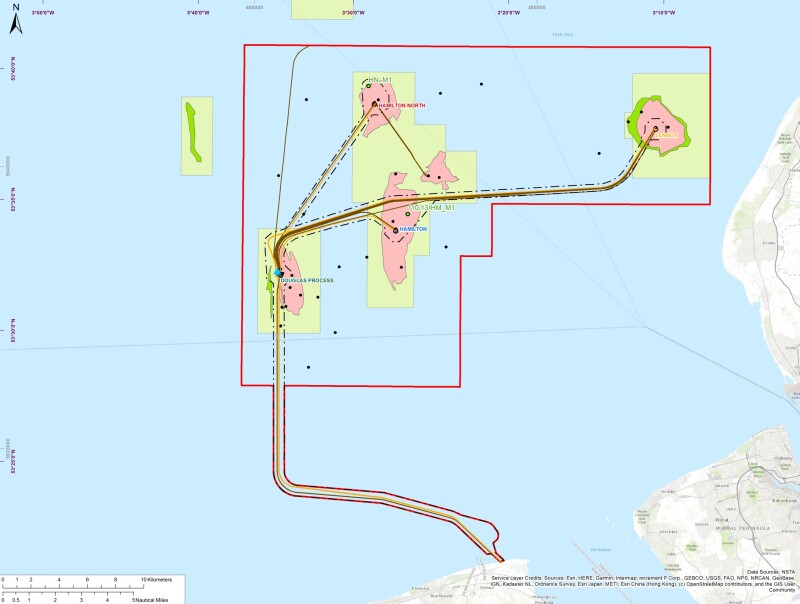The UK North Sea Transition Authority (NSTA) has awarded three carbon storage permits to Eni for the Liverpool Bay carbon capture and storage (CCS) project in the East Irish Sea.
NSTA and Eni announced on 24 April the permit awards and financial close for the project, which will serve the HyNet industrial cluster. The $2.7 billion system will receive CO2 from large-scale industrial emitters in northwest England and north Wales and store it in Eni’s depleted natural gas reservoirs under the seabed in Liverpool Bay.
In 2020, Eni received a CO2 appraisal and storage license for the planned Liverpool Bay CCS project, which targeted use of reservoirs in the Hamilton, Hamilton North, and Lennox fields and associated infrastructure. In March 2024, UK government’s Department for Energy Security and Net Zero (DESNZ) granted a development consent order for the HyNet North West CO2 pipeline, which allows the construction, operation, and maintenance of infrastructure for transporting captured CO2 as part of the HyNet CCS cluster.
With Liverpool Bay CCS, CO2 will be captured from cement manufacturing, waste plants, hydrogen production, and additional industrial players who connect to Eni’s infrastructure. The CO2 will be transported through new and repurposed infrastructure before being stored in the depleted offshore reservoirs.
The proposed development involves repurposing the existing offshore natural gas import pipeline from the Point of Ayr Gas Terminal to become a pipeline exporting CO2 to a newly constructed Douglas CCS platform—which will replace the existing Douglas platform—and onward to the Hamilton Main, Hamilton North, and Lennox platforms for injection into the depleted oil and gas reservoirs. The project also calls for constructing 35 km of pipelines to connect industrial emitters to the Liverpool Bay CCS network.
Eni said the financial close for the project with the DESNZ allows Eni, as operator, to move the project into the construction phase. Construction is expected to begin this year, with planned startup in 2028.

The project will have a storage capacity of 4.5 million tonnes of CO2 per year in the first phase and the potential to increase to 10 million tonnes of CO2 per year in the 2030s.
Eni CEO Claudio Descalzi said in a news release that the strategic agreement with the UK government was paving the way for the industrial-scale development of CCS. He said the HyNet Consortium, which Eni leads, will become one of the first low-carbon clusters in the world.
DESNZ noted that the closing of the economic deal for Liverpool Bay CCS with Eni solidifies the second of two government-backed CCS projects intended to kickstart the UK’s carbon capture industry. The East Coast Cluster in Teesside reached the same milestone in December.


